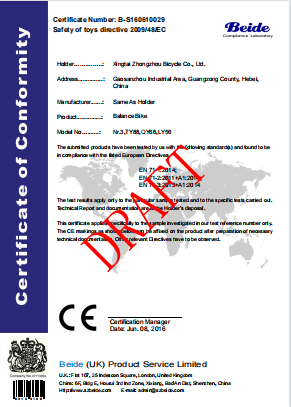When Is the Right Age for a Child to Start Using a Balance Bike
When Can a Baby Use a Balance Bike?
Balance bikes have become increasingly popular as a way for young children to develop their balance and coordination skills before transitioning to traditional bicycles. These simple two-wheeled bikes, which do not have pedals, allow children to push themselves along using their feet while maintaining balance. But when is the right time for a baby to start using a balance bike?
The appropriate age for a child to begin using a balance bike typically falls between 18 months to 3 years. However, readiness can vary significantly depending on the child's physical development, balance capabilities, and interest. Many children can begin using a balance bike effectively once they can walk confidently and have developed sufficient leg strength.
Physical Readiness
Before introducing a balance bike, it's essential to ensure that your child has mastered basic motor skills. A child should be able to walk steadily, which usually occurs between 12 to 15 months. Those who show an eagerness to run and navigate their environment tend to be ideal candidates for balance biking. Furthermore, children need to be able to understand and respond to basic instructions. This cognitive readiness will help them learn how to control the bike safely.
Choosing the Right Balance Bike
When selecting a balance bike, it’s crucial to choose one that fits your child correctly. A well-fitted bike allows the child to sit on the seat with their feet flat on the ground. Ideally, the seat height can be adjusted as your child grows. A bike that is too tall may lead to frustration and a lack of confidence, while one that is too short might not provide the necessary balance training.
when can baby use balance bike

Learning Process
Once you've established that your child is ready for a balance bike, the learning process can begin. Start by allowing your child to explore the bike slowly. They should feel comfortable sitting on it, scooting with their feet, and learning to balance. It's beneficial to provide a safe and open area, free from traffic and obstacles, where they can practice without the risk of falls.
Encourage them to push off with their feet and lift their legs to glide, gradually increasing their distance. The goal is to help them develop a sense of balance before introducing any type of steering or turning techniques. Be patient, as each child learns at their own pace, and the key is to keep the experience fun and pressure-free.
Safety First
Safety is paramount when your child begins riding a balance bike. Make sure they wear appropriate protective gear, including a helmet, knee pads, and elbow pads. Always supervise your child while they ride and establish clear boundaries regarding where they can go.
Using a balance bike is not just a fun activity; it also builds confidence and prepares children for riding a traditional bike later on. With the right balance bike and safety measures in place, your child can enjoy this exciting step toward becoming an independent cyclist.
In conclusion, while the age can vary, the transition to a balance bike is best suited for children who can walk well and show interest in learning new skills. This not only enhances their physical abilities but also sets the foundation for a lifelong love of cycling.
-
kids-scooter-tiny-olympic-games-scooterathlonNewsAug.22,2025
-
kids-scooter-waves-xingtai-zhongzhous-global-rippleNewsAug.22,2025
-
baby-tricycle-oem-legacy-zhongzhou-forgedNewsAug.22,2025
-
xingtais-twin-tricycle-revolution-siblings-ride-togetherNewsAug.22,2025
-
baby-tricycle-design-inspired-by-ancient-armorNewsAug.22,2025
-
nfc-chip-enabled-oem-baby-tricycle-trackingNewsAug.22,2025
-
The Perfect Baby TricycleNewsAug.11,2025








